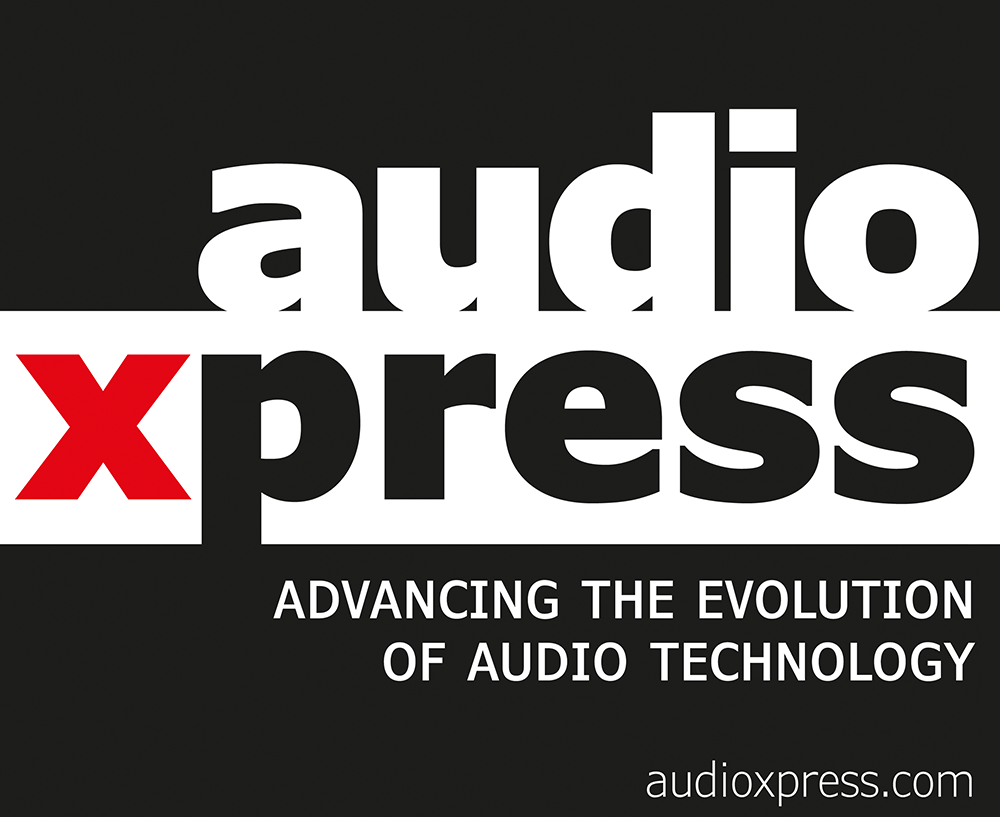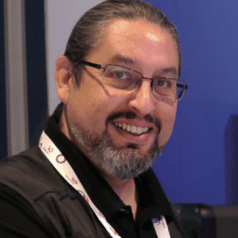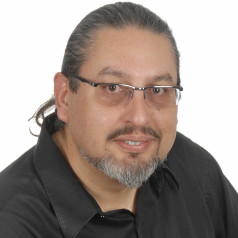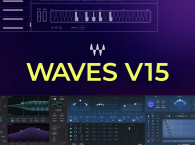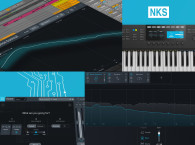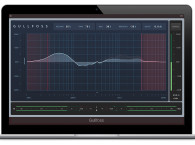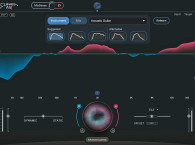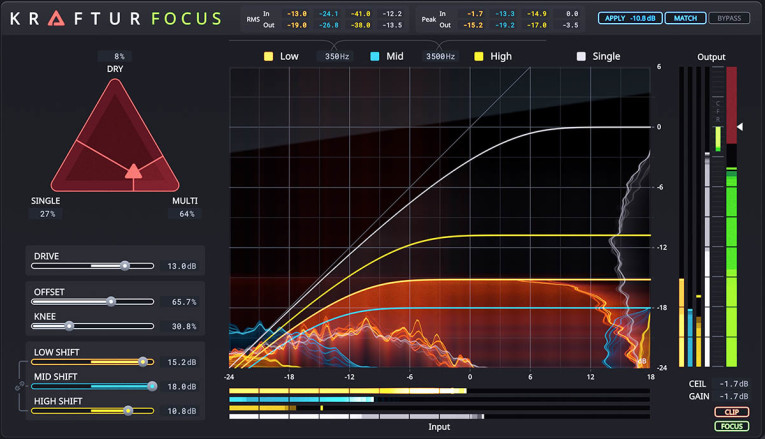
Soundtheory emerged in 2016, and is the brainchild of mathematical physicist Andreas Tell, who has been researching and working with sound for over 20 years. Under the direction of Managing Director David Pringle and Development Director Andreas Beisler, the company works on alternative signal processing approaches, inspired by quantum theory and mathematical methods. Combining those methods with auditory perception, Soundtheory developed exciting new methods for realtime audio processing. Gullfoss, an intelligent automatic equalizer, was the first of its products.
Kraftur, its second product, helps increase the power of a signal while containing the signal peaks when used on the mix bus. It can excite the top end of individual mix elements such as vocals, drums or strings, introducing more detail, depth and crispness. Kraftur is very effective for adding frequency-specific saturation while maintaining the quality and dynamics of the original material.
Kraftur Focus is a special edition of Kraftur that has been designed for parallel processing applications. Kraftur Focus applies an additional phase alignment stage to the signal after the saturation stages, allowing for increased phase coherency between the processed and bypassed signal, while preserving the unique character of Kraftur's saturation. The tradeoff is that the phase alignment stage requires approximately 40-50ms of processing latency.
Kraftur Focus is designed to be used as a send effect. This facilitates blending of the output of Kraftur Focus with the original (bypassed) source material, or even other processed phase coherent signals derived from the same source. Moreover, multiple channels can also blend into the same instance of Kraftur Focus without the need for creating multiple instances, saving CPU resources.
Kraftur Focus comes with an additional Focus parameter (located at the bottom right of the GUI) which can be used to engage/disengage the phase alignment stage. By default Kraftur Focus has Focus engaged, and disengaging Focus will cause Kraftur Focus to be identical to Kraftur, albeit with the additional processing latency. Toggling Focus allows the user to listen to any difference the phase alignment stage may induce. In most cases, this difference is minimal, however, disengaging Focus can sometimes allow increasing the loudness without affecting the perceived signal integrity, the reason why Soundtheory recommends to use Kraftur instead, if used as an insert effect.
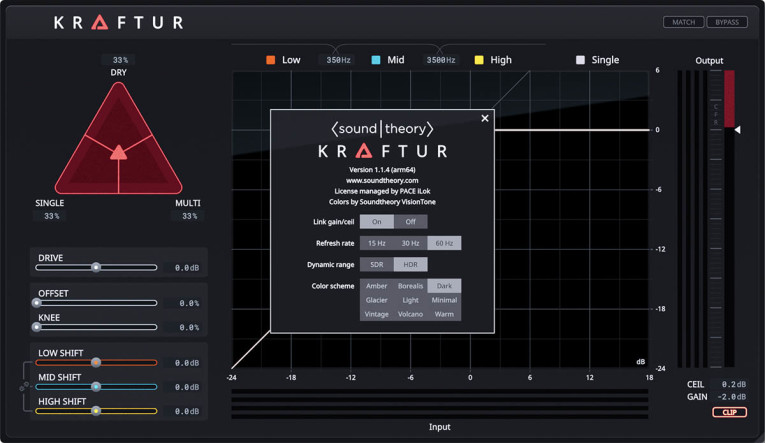
A stats panel can be made visible by clicking the space within the portion of the title bar that sits between the Kraftur logo and the Match/Apply buttons. The stats panel reveals numeric read- outs for the meters displayed in the GUI. The stats are divided into two panels; the first stats panel shows the band levels before and after the initial saturation stage. Clicking the stats panel again reveals the second panel, which displays the overall levels as well as the CFR.
Although there is no dedicated Shift parameter for the single band, it is possible to achieve a Virtual Single Shift by dragging vertically on the single band's transfer curve. This modifies Drive while automatically compensating the Low/Mid/High Shift to ensure the multiband processing remains unchanged. Virtual Single Shift can affect the overall level, so Match will need to be engaged if level matching is required.
Kraftur Focus was developed in response to users who have asked for phase compensation. The original Kraftur intentionally uses minimum phase filters since they help to increase the statistically available headroom, while maintaining the energy of the signal.
New features available in both editions include the ability to display a wide range of statistics - RMS, peak and peak hold values of both input and output signals as well as the Crest Factor Reduction. It is also now possible to emulate a band shift for single band processing by dragging on the single band’s transfer curve.
Both editions are available in one download at an RRP of $99. Current owners of Kraftur can upgrade to the new versions at any time for free.
www.soundtheory.com
